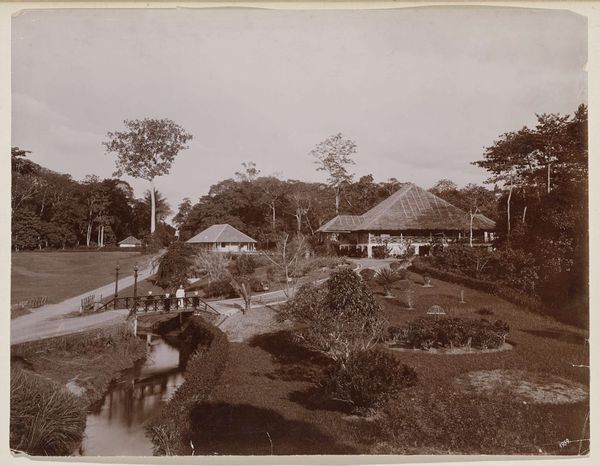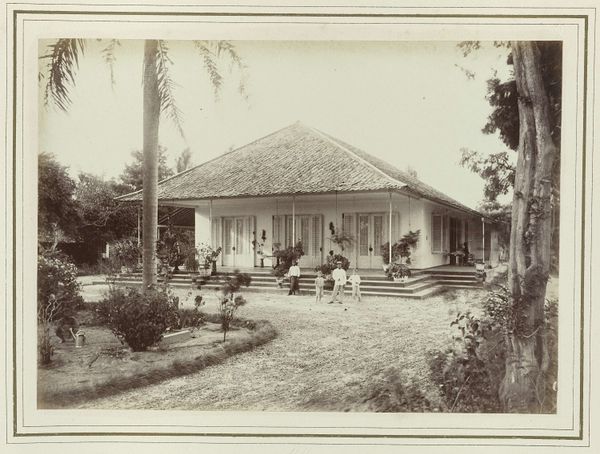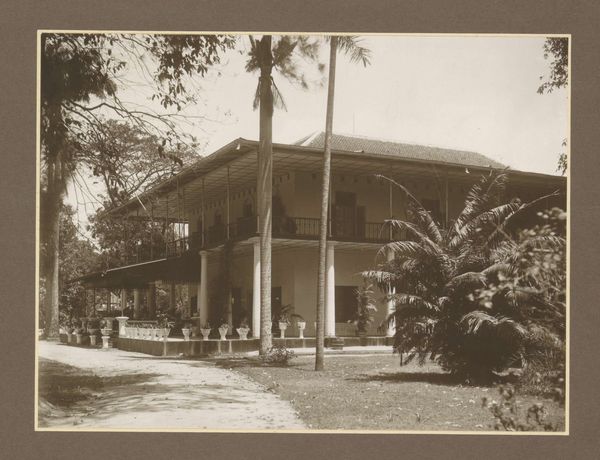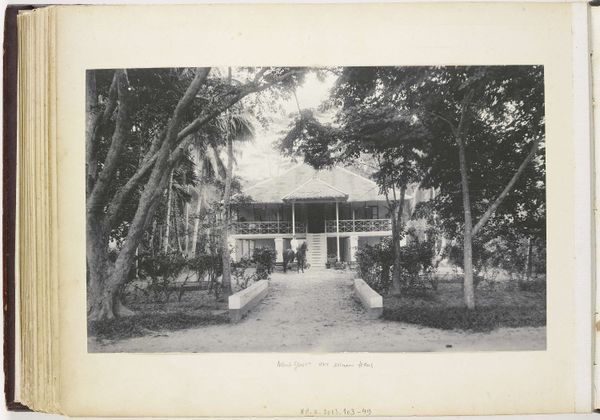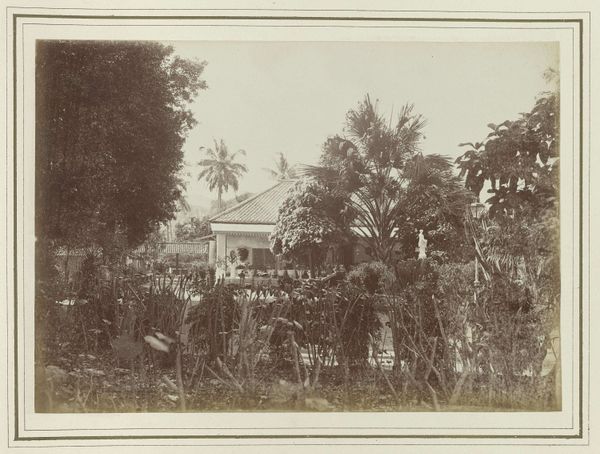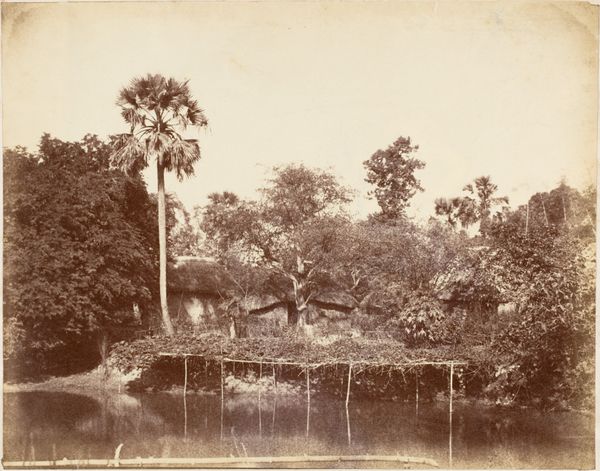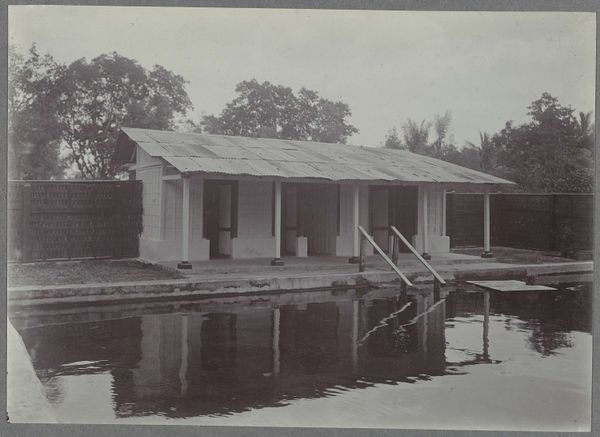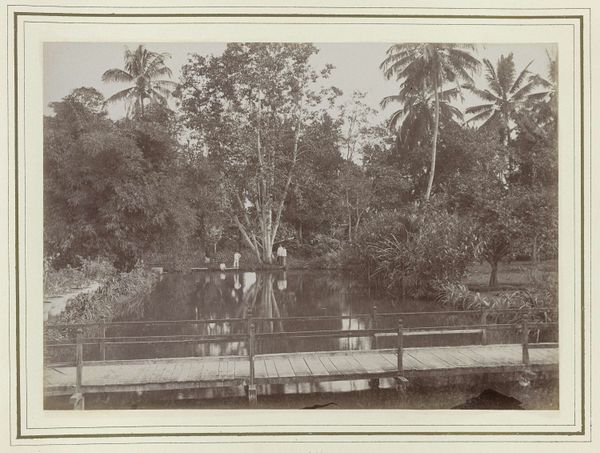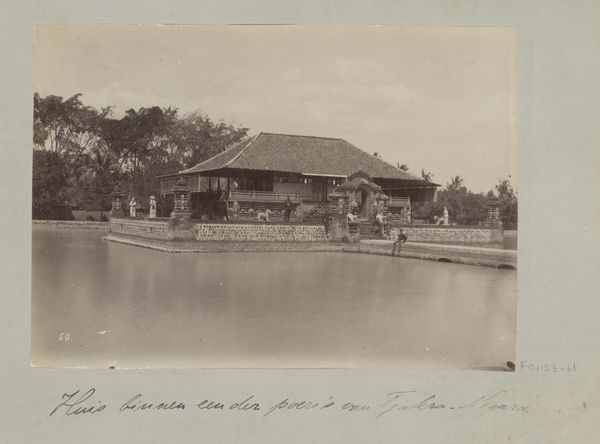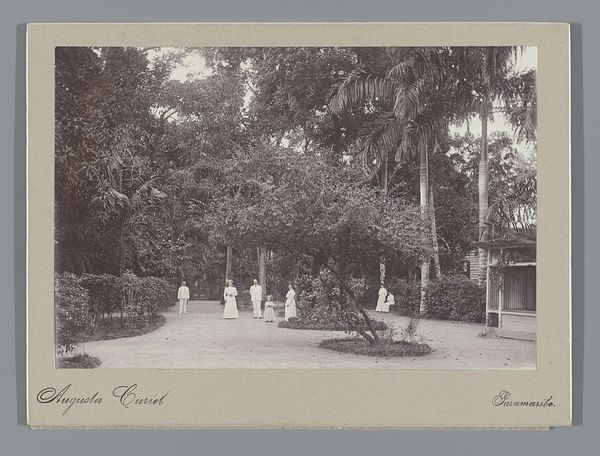
photography
#
portrait
#
landscape
#
photography
#
orientalism
#
cityscape
Dimensions: height 150 mm, width 210 mm
Copyright: Rijks Museum: Open Domain
Curator: What we have here is a photograph by Kassian Céphas, entitled "Huis aan het water", or "House on the Water," created around 1886. Editor: It projects such a sense of stillness. The reflected light, the symmetrical structure, even the muted tones – all evoke a feeling of profound peace, as if the entire scene is holding its breath. Curator: Observe how the composition centers on the house itself, a study in horizontality emphasized by its low-slung roofline and the mirrored surface of the water. Note, too, how the tonal range moves subtly from dark foreground, medium middle ground to the very soft blacks and whites of the structure. The perspective flattens the depth, accentuating the picture's planarity. Editor: It’s also the careful orchestration of visual symbols. The house elevated almost temple-like over water suggests purity and reflection, quite literally mirrored in the water. Then you have those figures; they're presented at the midpoint between cultivated space of the villa and wild natural forest backdrop - they must occupy an intermediary role somehow? Curator: It's hard to say definitely, but it would certainly point to the human figure mediating between the structured space of the building and organic world beyond. Perhaps, though, more simply we should acknowledge the use of repeated form - observe those circular details above the eaves that echo in the plant forms below, the repeated human forms also serve a unifying function here. Editor: Agreed. The repeated forms give rhythm, a symbolic grounding in a cycle. The human forms remind of those ancient Eastern water rituals or, again, perhaps figures in the colonial landscape presented as 'civilizing' the natural. What is certainly clear, if less consciously orchestrated, is that the sepia tones give a beautiful historicised or perhaps melancholic aura today. Curator: Precisely. That melancholic air might also emanate from what structural theorists term the "absent presence"—the scene's palpable sense of existing for someone no longer here, a historical marker laid out carefully to invoke more complex responses now than perhaps it would on initial inspection. Editor: So much can rest upon such a balanced but emotionally stirring vista, indeed. Curator: Indeed; this image functions both as a descriptive record, yet contains powerful, complex emotional undercurrents revealed on analysis.
Comments
No comments
Be the first to comment and join the conversation on the ultimate creative platform.
